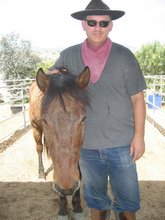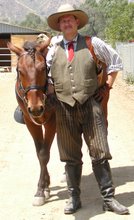
Well, I finally had a chance to really play this one through again after re-reading the rules (they're not the best organized) and I have to say that I believe that the play balance is skewed towards the Germans.
The initial gas attack was a complete disaster for the Allies and on the first game turn, almost the entire north side of the Ypres salient was demolished and the Germans were able to make significant gains and completely obliterate the French 45 Algerian and 185 Territorial divisions and severely maul the Belgian 6th Division. In fact, the Germans were able to ford the canal and immediately head west.
Even with the mandatory halt rules for the turn following the deployment of gas, the Germans were able to keep the Allies off-balance and keep grinding up Allied units. Game Turn 2 saw the Germans exiting one complete infantry division of some four infantry regiments and three artillery batteries (10 points per unit) and drive to the outskirts of Ypres itself. I finally called the game with the Germans possesing over 150 victory points (70 or more is a decisive German victoy).So what went wrong? The gas rules are very powerful and if you get the wind blowing in the right direction, there's little the Allies can do.
At the heart of the game is that each unit has a morale level that is driven down by casualties and in order for a unit to pass its morale check, it has to roll equal or lower to its respective division index. Normally this would use two dice but when you use gas for the first time, it's four dice and unless you roll all "ones", you're going to fail.
Worse, if you roll even, it inflicts another hit to the morale index. The Alies are pretty much screwed.However, I also have to point out some interesting features in the game system. Combat starts with artillery barrages and unlike other games which simply have the player add the artillery to the infantry combat factor, the artillery fires to gain a result that will adversely modify the defender's defensive fire. The defender then fires back with the defending unit/units and adds the artillery factor from one battery. The roll on the defensive fire is modified by the result of the initial artillery barrage. The result of defensive fire is a factor that modifies the melee combat.
So in the end, it's all about suppressing the enemy's defensive fire and when the melee combat comes, you still need to be sure to have enough infantry units to get a high-odds attack. I tried attacks with one infantry regiment and a lot of artillery support and the combat result was poor- in short, to succeed you need a superiority of artillery to suppress the defenders defensive fire AND a superiority of infantry for the melee attack. This gives everything a semi-tactical feel and it's interesting.
Another factor to keep in mind is that units that move cannot attack in the same phase so you really have to carefully consider your deployments capabilities.But still, with the initial gas attack and the benefit of historical hindsight, the German has a very good chance of winning because he's not going to attack agressively and try to break the Allied line.Overall, it's a good game with some interesting ideas but I fail to see how the Allied player has a chance, barring poor die-rolling by the German player.
An interesting historical exercise but as a game, I'm not sure given the lop-sided play balance.










No comments:
Post a Comment